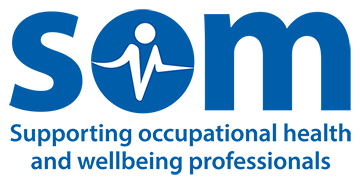Guest blog by Dr Sunita Babu, Dr Ed Clapham, Dr Jason Sharif and Dr Tok Hussain, Healthwork
Occupational health company, Healthwork, with the ECB created and managed the concept of ‘bio-safe bubbles’ at Emirates Old Trafford (Manchester), the Ageas Bowl (Southampton), Derbyshire County Cricket Club and Worcestershire County Cricket Club, to mitigate the transmission risk of COVID-19 and ensure the safety of the players, officials and supporting staff working on-site. Occupational Medicine Specialist Trainees were involved, to support the bio-secure environment, and the project included:
- Initial workplace visits to assess and put in place plans to mitigate risk in the stadia. The risks were diverse with multiple buildings and accesses including restaurants, TV studios, changing rooms and hotels
- Set-up and management of an ‘inner bubble’ and ‘outer bubble’ hotels for staff depending on their work status
- Strict attention to good hygiene process was taken into consideration. We considered particularly the use of sanitisation equipment and cleaning on site, social distancing wherever this was possible and the use of PPE in high traffic areas around the site
- Workers on site were categorised into different work streams which their accreditation would allow them access to and there were dedicated lanes and entry points for movement around the site for these workers
- Development of a smart phone application which each worker needed to gain and renew accreditation on. This included:
- An initial vulnerability questionnaire which considered workers co-morbidities and risk in the context of COVID-19. These were reviewed by clinicians and enabled individuals’ vulnerability to be categorised into ‘green’ - fit, ‘amber’ - fit for site work with additional precautions, and ‘red’ - unfit for site work
- A nasal and throat swab which had to be negative at set intervals prior entering and staying on site. Liaison and testing with a parent laboratory company was set up and undertaken
- A daily symptoms questionnaire which if answered positively would preclude entry until rapid (aimed within the hour) review by a clinician
The bio-safe environment was created into an inner and outer bubble. An inner bubble was set up where a group of players, match officials and support staff stayed on site throughout the series and were only permitted to leave at certain set times.
The outer bubble was for day visitors – such as the occupational health team and ground staff who underwent a daily symptom questionnaire as part of their health passport and temperature checks on entry to the bio-secure environment. They generally stayed in a separate off-site hotel.
Support during the two days prior to and through the game was intensified with a doctor and nurse on-site presence in the day, and a 24 hour on-call service. Day to day concerns around match days were:
- Ensuring workers coming onto site had all passed their accreditation checks daily and rapid response to anyone developing symptoms – with teleconsultation and decisions to either admit or exclude from the bio-safe environment. As these were often filled in throughout the day and night this required an element of flexible working and quick responsiveness
- Signposting to access to NHS services for those presenting as generally unwell or those who may have symptoms compatible with COVID-19 infection
- Assistance with technology on the security gates
- Ongoing screening of vulnerability questionnaires for new employees
- General medical care – this was often primary care in nature for a range of problems or injuries which may present on site and required access to basic medication and first aid facilities
- A visible onsite presence where workers could come and speak directly to the medical team and have close interaction to ensure they felt safe working in the ‘bubble’
- Liaison with the testing company to ensure testing of individuals occurred routinely as part of their health passport and for those where clinical suspicion mandated extra additional testing was met in line with timeframes
- We worked closely with dedicated medical managers onsite who had oversight of the venue
Communication was key, to offer clear and concise advice to staff members, given the potentially significant consequences of contaminating the bio-secure environment with the virus. There was an element of corporate reputation to be upheld in running the events and risk mitigation had to be set in a wider corporate context.
Although morale was high, psychological support for on-site workers through occupational health was important, in view of the atypical environment in which we were working and the tight restrictions in place in terms of no external leisure activities, minimal social opportunities and no eating out in restaurants – although admittedly the hotel food was delicious!
There were posters displayed on-site containing contact details for our 24/7 support and we found that being visible and providing a dedicated occupational health presence on-site helped to promote staff health and wellbeing for those where ‘cabin-fever’ was beginning to set in. The 24/7 support also enabled us to react quickly to any potential health concerns and provide immediate advice to the individual and managers.
Working within a bio-secure environment during a global pandemic has been extremely interesting and it has proved to be an invaluable training experience. We feel the model created would be applicable to other mass events in sporting or entertainment areas.

